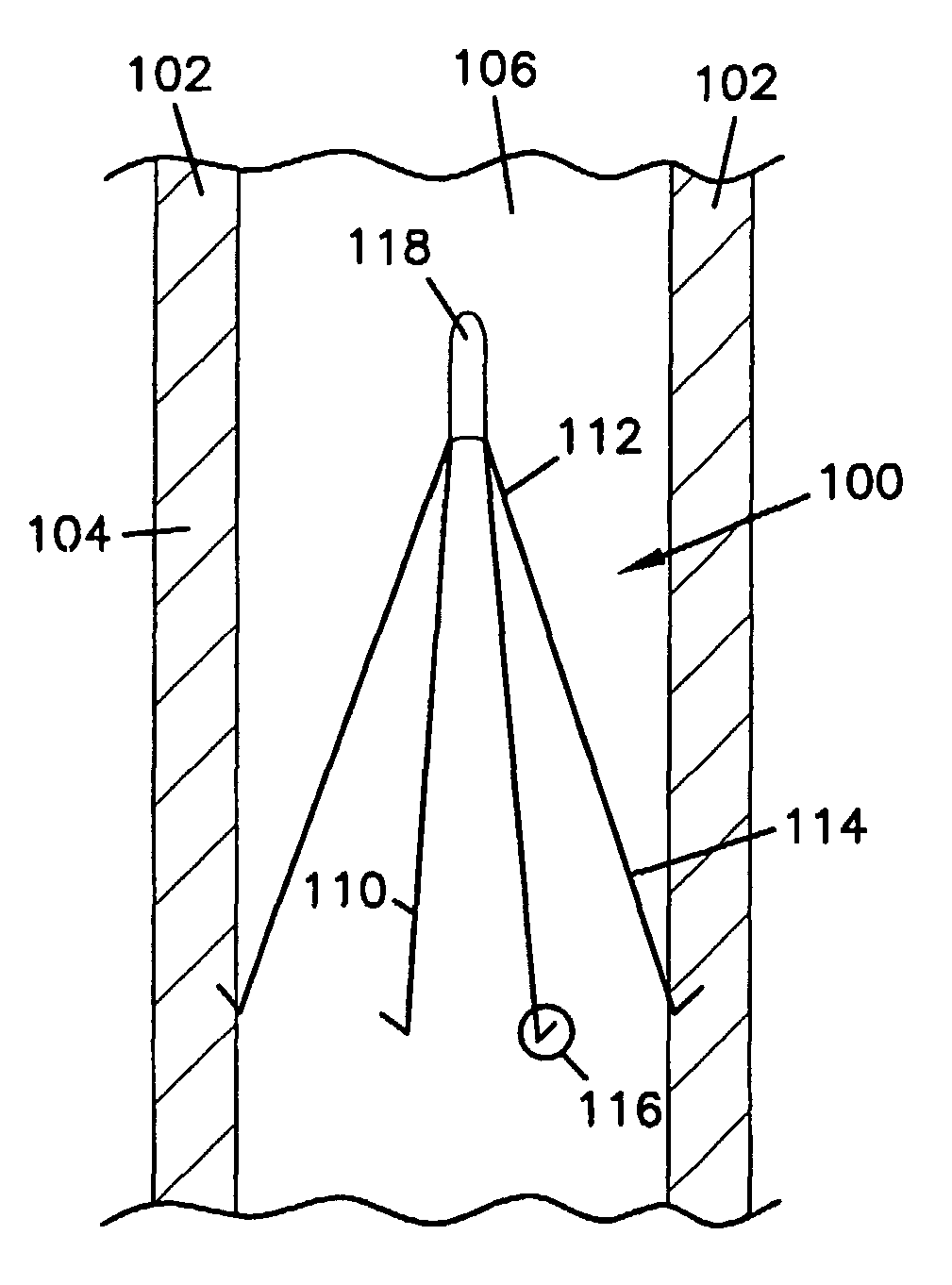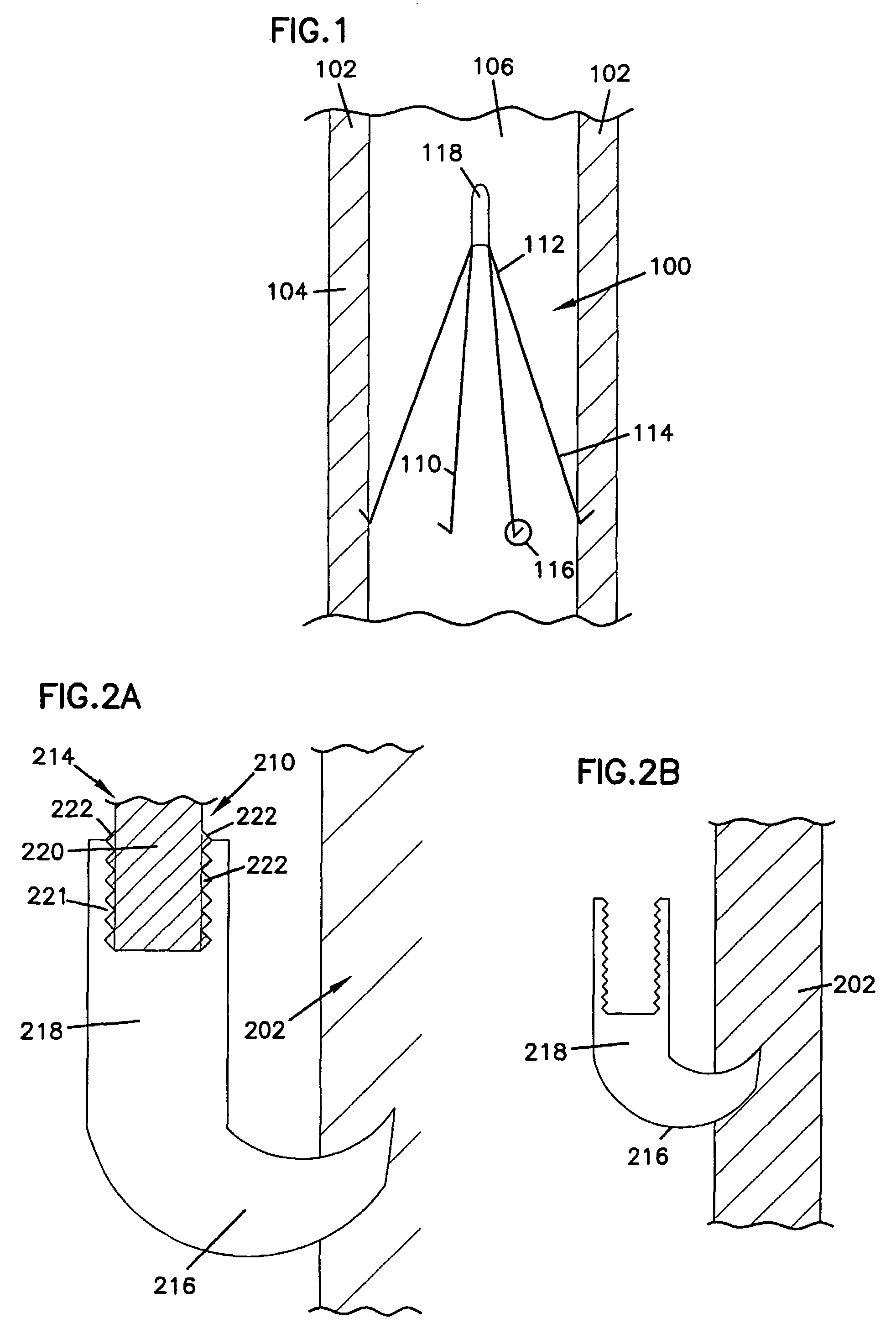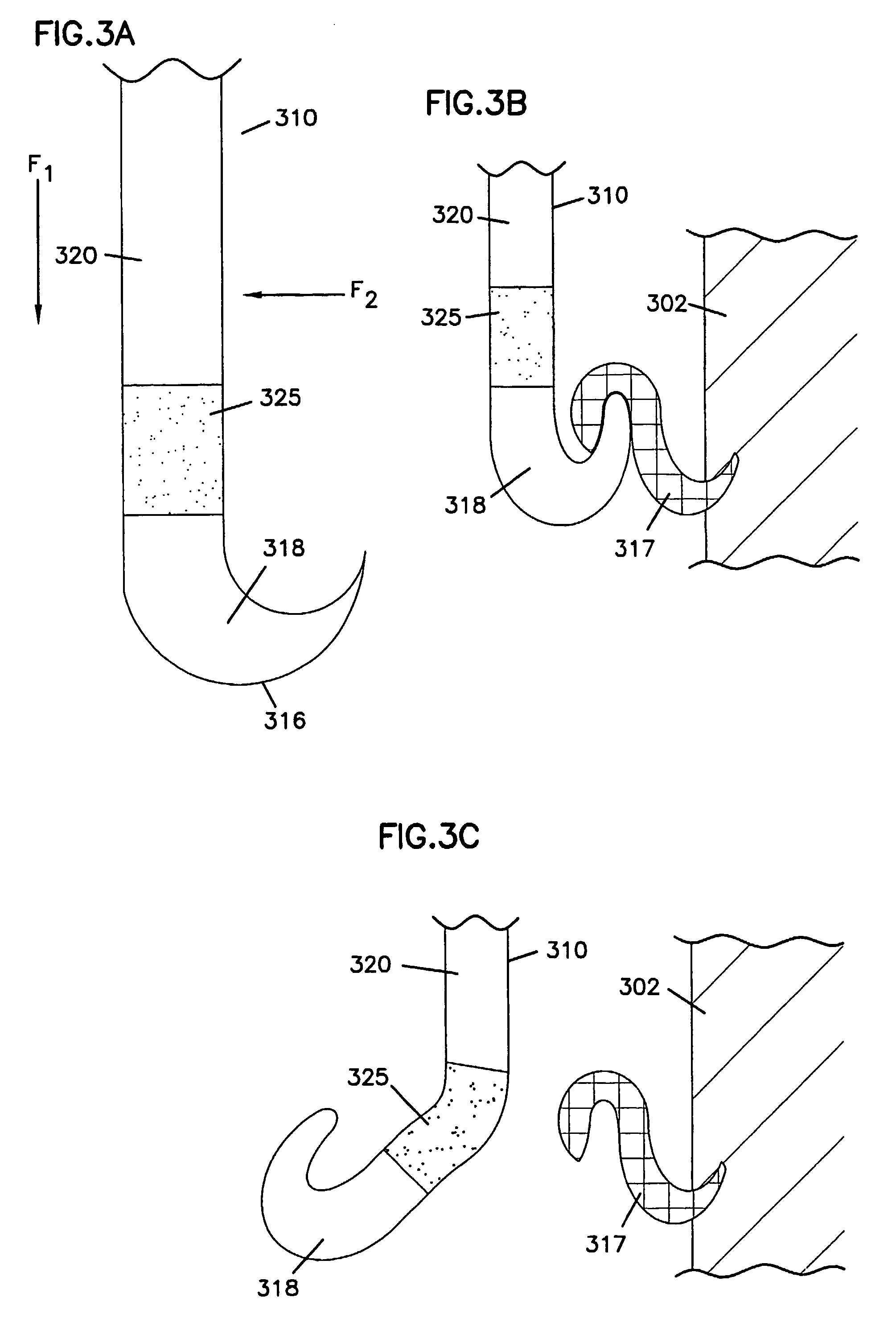Venous filters
a filter and vein wall technology, applied in the field of filters, can solve the problems of inability to remove the filter, the vessel wall is gravely injured, and the complications of temporary filters are inacceptabl
- Summary
- Abstract
- Description
- Claims
- Application Information
AI Technical Summary
Benefits of technology
Problems solved by technology
Method used
Image
Examples
Embodiment Construction
[0027]FIG. 1 depicts a venous filter 100 disposed in a blood vessel 104. The blood vessel 104 includes walls 102 that create a lumen 106. The venous filter 100, when deployed, is located within the lumen 106 and is anchored in some fashion within the walls 102.
[0028]The venous filter 100 has a generally conical shape. The venous filter 100 includes at least one strut 110 and a head 118. The number of struts 110, and the configuration of the struts 110 may vary depending on the particular type of venous filter 100. Each of the struts 110 has a connected end 112 and a non-connected end 114. The connected ends 114 of the struts 110 are connected by or within the head 118.
[0029]At least one of the struts 110 has an anchor 116 on the non-connected end 114. In some venous filters, such as that shown in FIG. 1, each of the struts 110 has an anchor 116 on the non-connected end 114. When deployed in a blood vessel 104, the non-connected ends 114 contact the wall 102. The anchors 116 then con...
PUM
| Property | Measurement | Unit |
|---|---|---|
| temperatures | aaaaa | aaaaa |
| temperatures | aaaaa | aaaaa |
| temperature | aaaaa | aaaaa |
Abstract
Description
Claims
Application Information
 Login to View More
Login to View More - R&D
- Intellectual Property
- Life Sciences
- Materials
- Tech Scout
- Unparalleled Data Quality
- Higher Quality Content
- 60% Fewer Hallucinations
Browse by: Latest US Patents, China's latest patents, Technical Efficacy Thesaurus, Application Domain, Technology Topic, Popular Technical Reports.
© 2025 PatSnap. All rights reserved.Legal|Privacy policy|Modern Slavery Act Transparency Statement|Sitemap|About US| Contact US: help@patsnap.com



